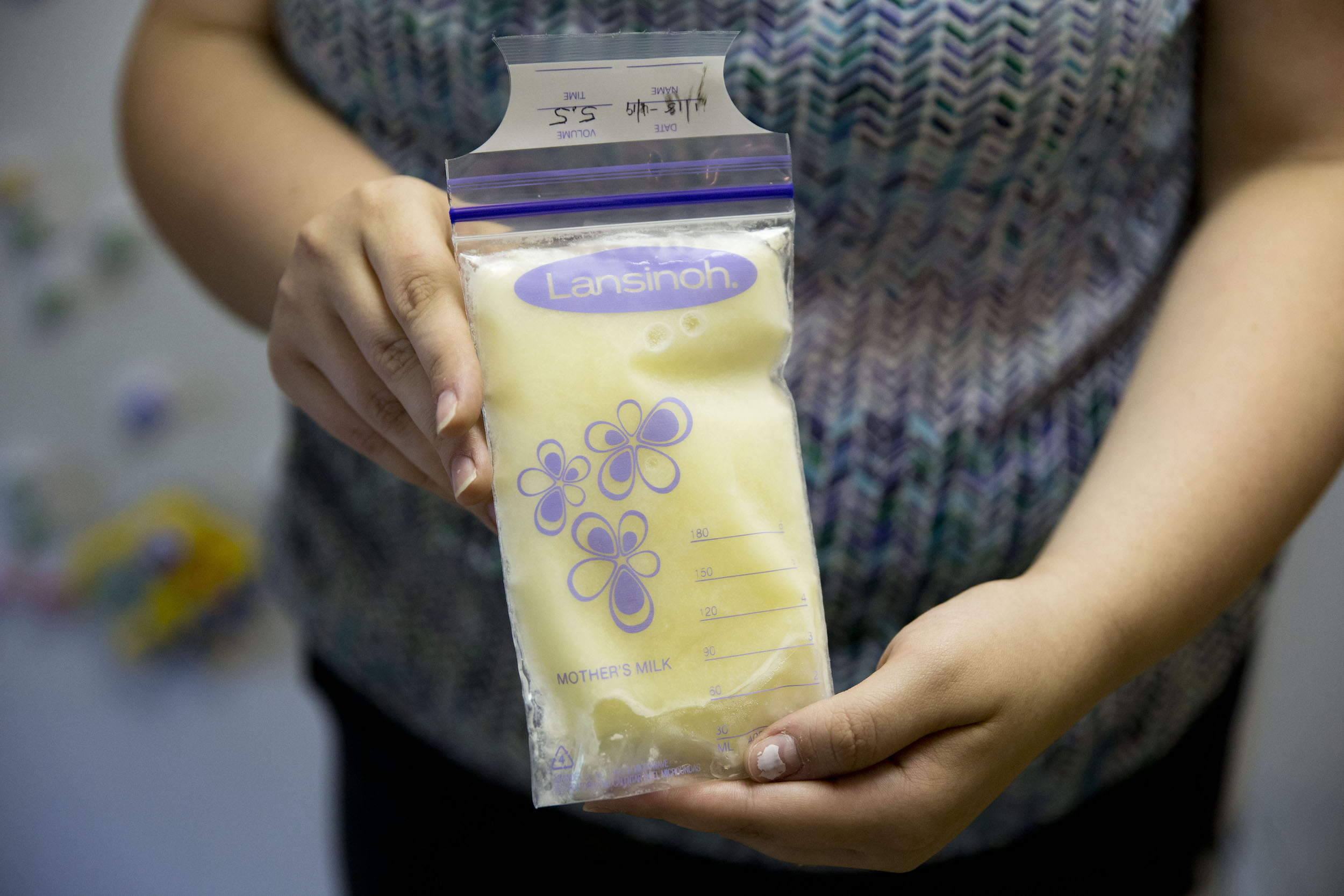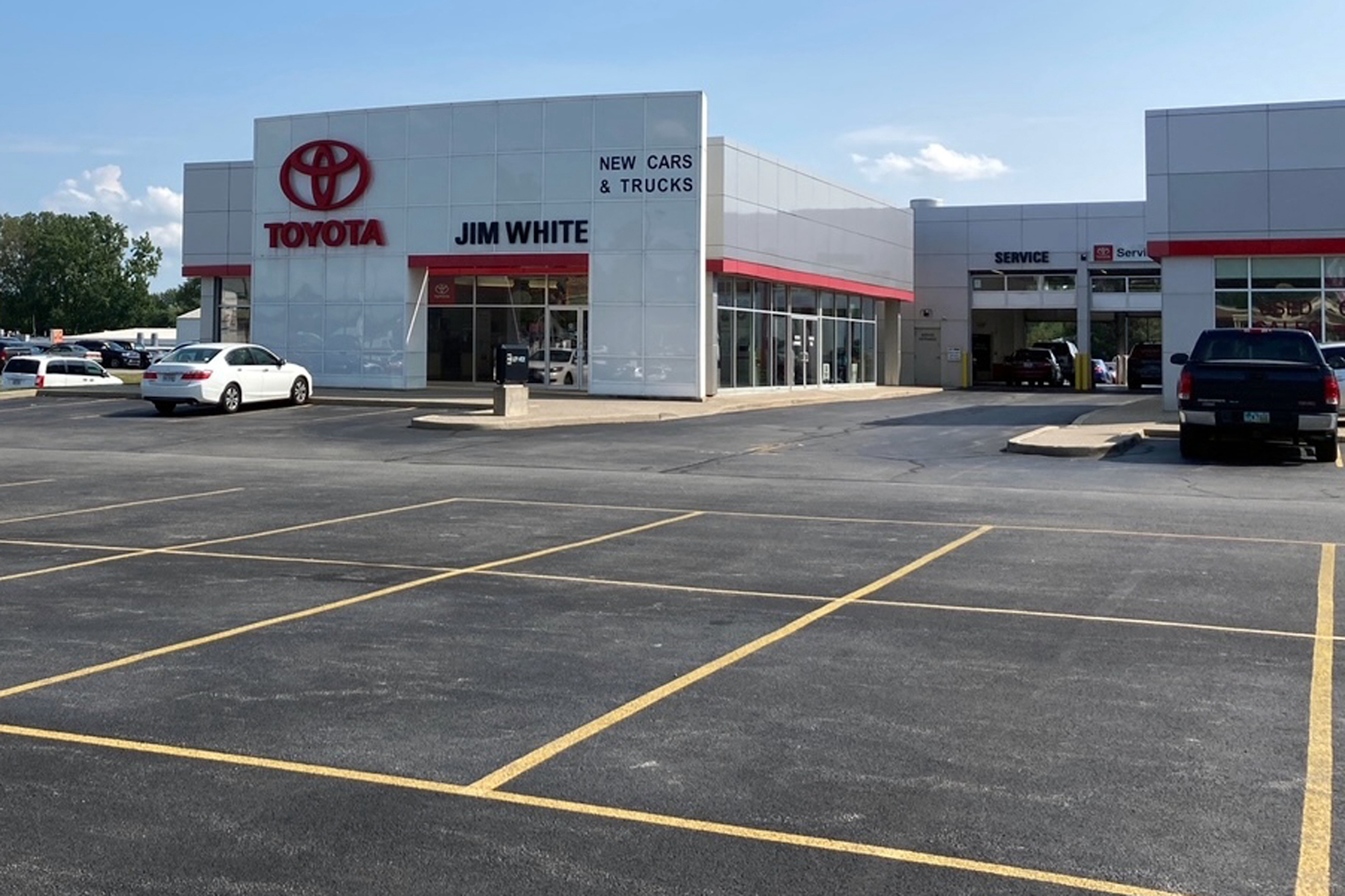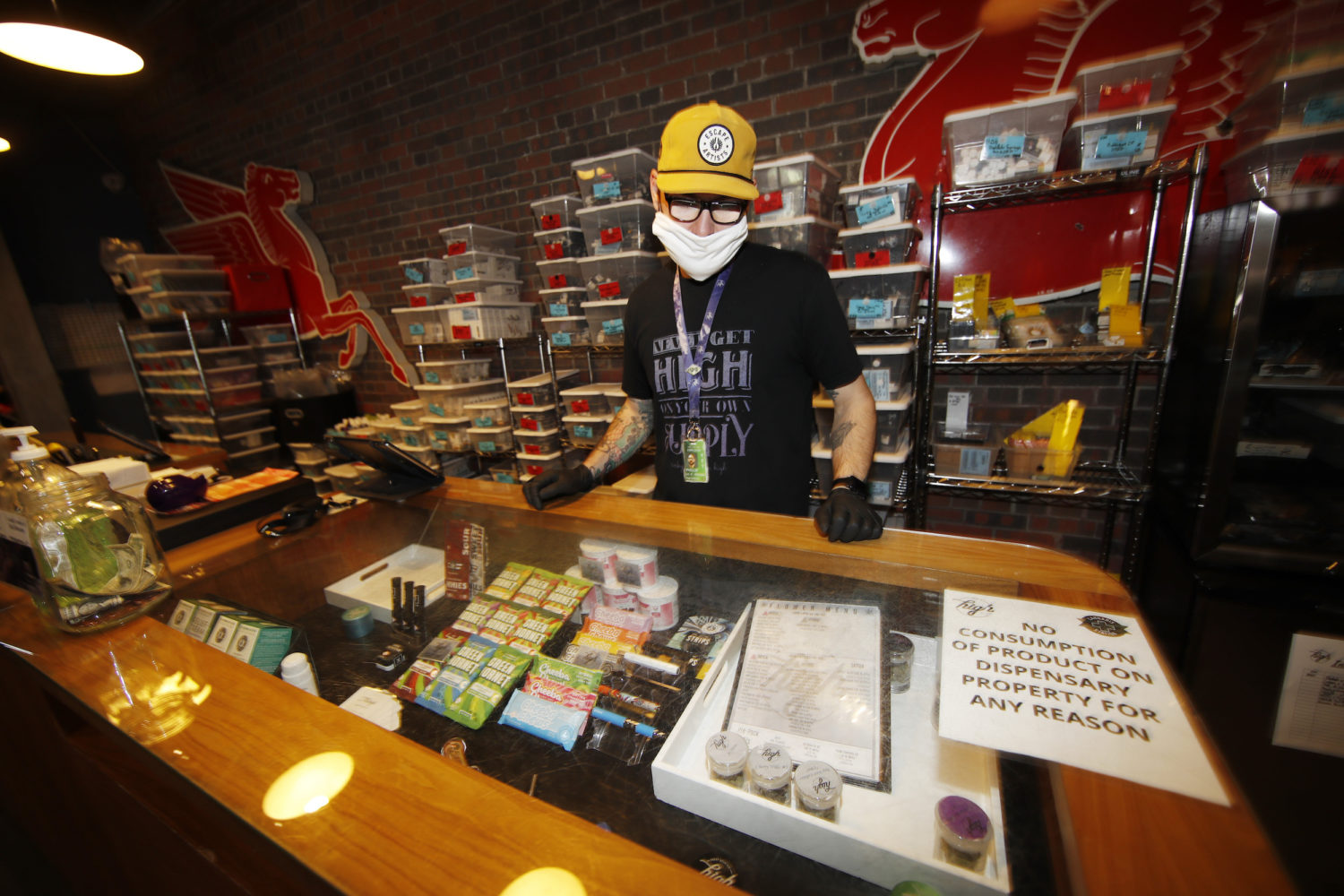 Covering COVID-19 is a daily Poynter briefing of story ideas about the coronavirus and other timely topics for journalists, written by senior faculty Al Tompkins. Sign up here to have it delivered to your inbox every weekday morning.
Covering COVID-19 is a daily Poynter briefing of story ideas about the coronavirus and other timely topics for journalists, written by senior faculty Al Tompkins. Sign up here to have it delivered to your inbox every weekday morning.
Stat explores the big debate over whether CBD, marijuana and other such plant-derived products have any potential to protect against COVID-19. It might sound outlandish, but it is a real area of research and there are no definitive answers. That is not preventing believers from making such claims, however.
The first, most basic research raised hopes. But even that researcher warned everyone not to jump to conclusions.
“We don’t want people running out taking random cannabinoids,” said Marsha Rosner of the University of Chicago, the senior author of one of the new studies.
The research also presents a new challenge for the Food and Drug Administration, which is already struggling to police the rapidly growing CBD market. While the agency has said CBD makers can’t market their products as medical treatments without conducting a clinical trial and submitting an application to the agency, few companies have actually invested in conducting those trials. Instead, companies have tried to tiptoe around the FDA rules by selling their products as dietary supplements and making only modest claims. Experts fear that the FDA’s job will only get harder with the increased hype around cannabinoids and Covid-19.
Here are two research projects that are getting the most attention:
Rosner and her team’s paper was published in Science Advances this month, soon after researchers in Oregon reported in the Journal of Natural Products that two chemicals found in hemp, CBGA and CBDA, could bind to the virus’ spike protein and thus prevent it from infecting cells in lab dishes.
Rosner herself keeps reminding CBD and pot enthusiasts that what looks promising in the lab may not pan out. Stat added this:
“These are the seeds of our knowledge related to how cannabinoids might interact with the SARS-Cov-2 virus,” said Ziva Cooper, the director of the UCLA Cannabis Research Initiative. “We have a long way to go.”
CDC to direct pharmacies to give 4th vaccine to immunocompromised people
The Centers for Disease Control and Prevention urged immunocompromised people to get a fourth dose of the COVID-19 vaccine, but immunocompromised people say pharmacies have refused to give them fourth doses. The CDC says it will make a more direct statement in a conference call this week that should end the confusion.
Hospital removes man from transplant list after he refuses COVID-19 vaccine
A hospital in Boston took a man off the heart transplant list because he refuses to get vaccinated against COVID-19. CBS Boston reported the story that included this statement from Brigham and Women’s Hospital:
“Like many other transplant programs in the United States — the COVID-19 vaccine is one of several vaccines and lifestyle behaviors required for transplant candidates in the Mass General Brigham system in order to create both the best chance for a successful operation and also the patient’s survival after transplantation”
CNN shares similar cases in which people in need of life-saving transplants refused to get vaccinated and risked never getting the transplants that they need to live.
Kaiser Health News adds to the reporting:
Across the country, growing numbers of transplant programs have chosen to either bar patients who refuse to take the widely available covid vaccines from receiving transplants, or give them lower priority on crowded organ waitlists. Other programs, however, say they plan no such restrictions — for now.
At issue is whether transplant patients who refuse the shots are not only putting themselves at greater risk for serious illness and death from a covid infection, but also squandering scarce organs that could benefit others. The argument echoes the demands that smokers quit cigarettes for six months before receiving lung transplants or that addicts refrain from alcohol and drugs before receiving new livers.
“It is a matter of active debate,” said Dr. Deepali Kumar, an expert in transplant infectious diseases at the University of Toronto and president-elect of the American Society of Transplantation. “It’s really an individual program decision. In many programs, it’s in flux.”
As of late April, fewer than 7% of transplant programs nationwide reported inactivating patients who were unvaccinated or partially vaccinated against covid, according to research by Dr. Krista Lentine, a nephrologist at the Saint Louis University School of Medicine.
There are 107,000 people awaiting transplants in the United States and dozens die each day waiting for a donor. For that reason, transplant centers say, they have to be selective about which recipients have not only the greatest need but the best chance of a good outcome.
If Biden can force federal employees to get vaccinated, why can’t he force Congress to get vaccinated?
I suppose this is another of those examples of the hazards of getting your news and civics lessons from Facebook and Reddit, but the rumor has been running for a while that President Joe Biden “exempted Congress” from his mandate that required federal employees to be vaccinated. The line of logic goes, “If our elected representatives in Congress don’t have to get vaccinated, why should I have to take the shot to keep my job?”
My colleagues at PolitiFact talked with legal experts to help explain why the president can’t impose a mandate on members of Congress or their staff:
“Another way to think about it is that members of Congress work directly for the people, not for President Biden,” said David Super, a professor of law and economics at Georgetown Law. “He therefore has no power to give them orders. The same is true of federal judges.”
The U.S. government is divided into three separate, but equal branches of power: the executive, the legislative and judicial branches. Congress makes up the legislative branch, which passes the laws that the executive branch must then enforce.
As the name implies, Biden’s executive order only applies to workers in the executive branch of government. It states that “each agency shall implement, to the extent consistent with applicable law, a program to require COVID-19 vaccination for all of its federal employees, with exceptions only as required by law.” It also defines an agency as an “executive agency” under title 5 of the U.S. code, which reads “for the purpose of this title, “executive agency” means an executive department, a government corporation, and an independent establishment.
Members of Congress and their staff are not subject.
Breast milk banks suffering severe shortage, fragile infants depend on it

Rachel Palencik poses for a photograph with her frozen breast milk Wednesday, June 17, 2015, in West Chester, Pa. (AP Photo/Matt Rourke)
Breast milk banks work like blood banks, where women donate breast milk to fragile babies who are premature or sick or who have digestive problems. Babies in intensive care are especially in need of human-produced milk. But donations are way down and the number of donors is declining, too.
Across North America, milk banks are seeing a rise in interest. Unfortunately, they’re also seeing a plunge in supply, which has them sounding the alarm that shortages are imminent.
“Demand has been surging in hospitals, primarily,” said Lindsay Groff, the executive director for the Human Milk Banking Association of North America (HMBANA). “At the same time, supply has dipped.”
At all 31 milk banks in the US and Canada associated with HMBANA, milk donations are declining, down as much as 20% in some places.
Milk bank directors say they’re not at a crisis point yet, but they will be if shortages continue.
The pandemic adds to the demand and shortages in other ways. Because of COVID-19, parents are often not allowed to spend as much time in neonatal intensive care wards to nurse their babies. And studies show that COVID-infected unvaccinated women have increased chances of delivering babies prematurely, and premature babies are among those who benefit from donated milk.
Click on this map to find a milk bank near you:
The Guardian story included an interesting passage about how and why the pandemic affected breast milk donations. In 2020, donations rose:
Early in the pandemic, milk banks saw an “almost unprecedented” level of donations, Lindsay Groff, the executive director for the Human Milk Banking Association of North America said.
More working parents were spending time at home, allowing them to more easily nurse their children instead of giving them bottles. That helped them build their milk supply; some also kept pumping to save up milk for the return to childcare.
Soon, facing full freezers, parents turned to donations.
“Also, the pandemic really inspired people,” Denise O’Connor, executive director of the Mid-Atlantic Mothers’ Milk Bank said. “People want to be the helpers.”
As women return to the workplace, they find that some employers make it difficult to pump milk that might be donated.
Infant formula short supplies stressing parents
I do not know of any direct connection between the above story and this one, except that they are happening at the same time for different reasons. But I am seeing versions of this story around the country: Parents are scrambling to find infant formula.
The shortage is spotty and sometimes unpredictable where supplies will be on the shelf one day and are gone the next. CBS News reports:
The Infant Nutrition Council of America acknowledged there are some supply issues.
“Infant formula, it’s a very peculiar category. So, if there is a shortage, you notice it,” said Krishnakumar “KK” Davey from the retail research form IRI.
For major brands of baby formula powder, the average national in-stock rate before the pandemic was 95%, said Davey. But his firm found that as of last week, rates of availability across 10 national retailers ranged from 98% to as low as 75%. Powdered formula was less available in cities including Seattle, Wichita, and Tucson.
“Some of the shortages are related to procuring the raw materials, some of it in production, some of it is in packaging… and then labor shortages in the factory, transportation,” Davey said.
The Wall Street Journal tried to nail down what is causing the problem:
Retailers and formula makers agree that out-of-stocks are a problem. They don’t agree on how severe it is and who is to blame. Chains like Walmart Inc. and CVS Health Corp. say the manufacturers are having supply issues; formula makers say retailers aren’t getting product to stores once it is delivered. “The shelves are just bare,” said Derval Kenny, 65, of Rye, N.Y., who has been trying to help find Similac formula for two infant grandsons who live in Connecticut and New Jersey. “To me, there should be an uproar.” Ms. Kenny, whose grandsons are five and six months old, said she has driven to stores across her county and into neighboring Connecticut and placed an order on Amazon last week that hasn’t yet been delivered.
5-day supply on hand: The computer chip shortage is worse than you knew

The new car lot at the Jim White Toyota just outside of Toledo, Ohio, is depleted on Friday, Aug. 27, 2021, with only a few new vehicles available for sale. A global shortage of computer chips has forced automakers to temporarily close factories, limiting production and driving up prices. (AP Photo/Tom Krisher)
The U.S. Department of Commerce just reported that the computer chip shortage that has caused chaos in the auto industry and far beyond is “fragile.” And, the government report says, nothing much will change in the next six months.
In 2019, manufacturers had, on average, a 40-day supply of chips. Today, they have a five-day supply, which means severe weather or even a hiccup in trucking schedules could close factories and send workers home.
The computer chip supply is more than a headache for factories producing Apple Watches and washing machines. The shortage reduced auto production, which sent new and used car prices soaring — a big factor in national inflation rates.
The Commerce Department report said there are many factors underlying the chip shortage:
The semiconductor shortage has been described as due to a “perfect storm” of factors. Prior to 2020, there were already difficulties in obtaining inputs for production, including semiconductor manufacturing equipment used to make older varieties of chips, and components used in electronic assembly such as diodes, capacitors, and substrates. There was also an underlying growth in demand for chips as industries shifted to more semiconductor-intensive products (e.g., electric vehicles, 5G). The pandemic exacerbated these trends by dramatically increasing demand for products that require semiconductors of all types. Simultaneously, supply was disrupted by a series of black swan events such as factory fires, winter storms, energy shortages, and COVID-19-related shutdowns.
The fake rumor about ‘robbers handing out knockout masks’
Maybe you have heard or read the rumor about robbers who show up at front doors with free COVID-19 masks that are infused with some sort of knockout chemical. Police around the country say they have fielded questions about this ridiculous social media nonsense and ask people to stop repeating it. I have seen versions of the story from Europe to Australia to Michigan. Incredible.
PolitiFact looked at this rumor close to two years ago. It is just as nutty today as it was then.
We’ll be back tomorrow with a new edition of Covering COVID-19. Are you subscribed? Sign up here to get it delivered right to your inbox.








